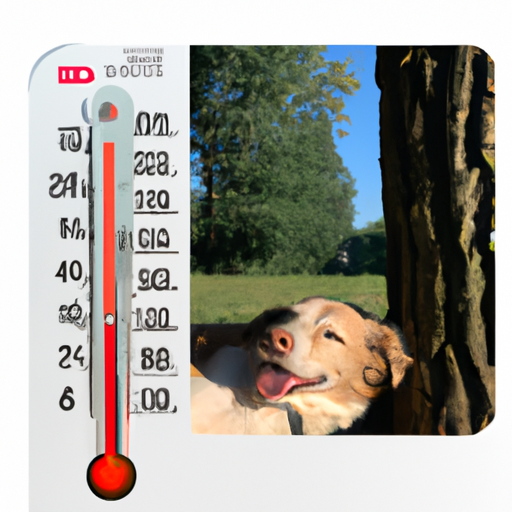As a caregiver, you have a massive responsibility in ensuring the well-being of your furry friend. Understanding the various factors that can affect their health is crucial. One such factor is the outside temperature. So, what outside temperature is too hot for dogs? This comprehensive guide aims to provide you with a detailed answer to this question.
H2: Understanding a Dog’s Body Temperature
Before we dive into the specifics of outside temperature, it’s essential to understand how your dog’s body temperature works. Unlike humans, dogs can’t sweat through their skin to cool down. Instead, they pant or sweat through their paws. This makes them more susceptible to overheating.
A dog’s normal body temperature ranges from 101 to 102.5 degrees Fahrenheit. Any temperature above this can indicate that your dog is overheating and can lead to conditions like heatstroke.
H2: The Danger Zone for Dogs
So, at what temperature should you start worrying? The answer is not as straightforward as you might expect. It depends on several factors, including your dog’s breed, age, health condition, and size.
However, as a general rule of thumb:
- Temperatures below 20 degrees Fahrenheit are too cold for most dogs.
- Temperatures above 80 degrees Fahrenheit are potentially unsafe.
- Temperatures above 90 degrees Fahrenheit are dangerous and can cause heatstroke.
Remember, these are general guidelines and your dog’s tolerance can vary.
H2: Factors that Influence a Dog’s Tolerance to Heat
Different dogs have different tolerances to heat. Here are a few factors that can influence a dog’s heat tolerance:
-
Breed: Some breeds are more heat tolerant than others. For instance, breeds with short noses like Bulldogs and Pugs have a harder time cooling down because they can’t pant as efficiently.
-
Age: Puppies and older dogs are more susceptible to heatstroke.
-
Weight: Overweight dogs are more likely to suffer from heat-related issues.
-
Coat: Dogs with thick, long coats are more likely to overheat.
-
Health: Dogs with health issues such as heart disease or breathing problems are more at risk.
H2: Tips to Keep Your Dog Cool
Here are some tips to keep your dog cool and safe during hot weather:
- Avoid midday walks: Walk your dog early in the morning or late in the evening when it’s cooler.
- Provide plenty of water: Make sure your dog always has access to fresh, cool water.
- Use cooling products: Consider using cooling mats or vests.
- Never leave your dog in a parked car: Even with the windows open, a parked car can quickly become a furnace.
- Watch for signs of heatstroke: These can include excessive panting, drooling, reddened gums, vomiting, diarrhea, unsteady on their feet, or collapse.
H2: Recognizing and Responding to Heatstroke
Recognizing heatstroke in your dog and responding quickly can save their life. Here are the signs of heatstroke in dogs:
- Excessive panting or difficulty breathing
- Increased heart and respiratory rate
- Drooling, mild weakness, stupor, or even collapse
- Seizures
- Bloody diarrhea and vomit
- Body temperature of above 104°F
If you notice any of these signs, move your dog to a cooler area immediately and call your vet.
FAQs
What should I do if I think my dog is overheating?
Move your dog to a cooler area immediately and give them fresh, cool water. If symptoms persist, contact your vet.
Can I shave my dog’s hair to help them stay cool?
Shaving your dog can actually make them more susceptible to sunburn. Instead, consider a light trim.
Is it safe for my dog to swim in hot weather?
Swimming can be a great way to cool off your dog. However, not all dogs are good swimmers, so always supervise them.
How can I tell if it’s too hot to walk my dog?
A simple test is to place your hand on the pavement. If it’s too hot for you to keep your hand there for five seconds, it’s too hot for your dog to walk on.
What are some signs of dehydration in dogs?
Signs of dehydration include dry nose, visible tiredness, excessive panting, and sunken eyes. If you notice these signs, give your dog water and contact your vet.
Remember, as a caregiver, your dog’s health and comfort should always be a priority. Stay informed, stay vigilant, and most importantly, stay cool!



